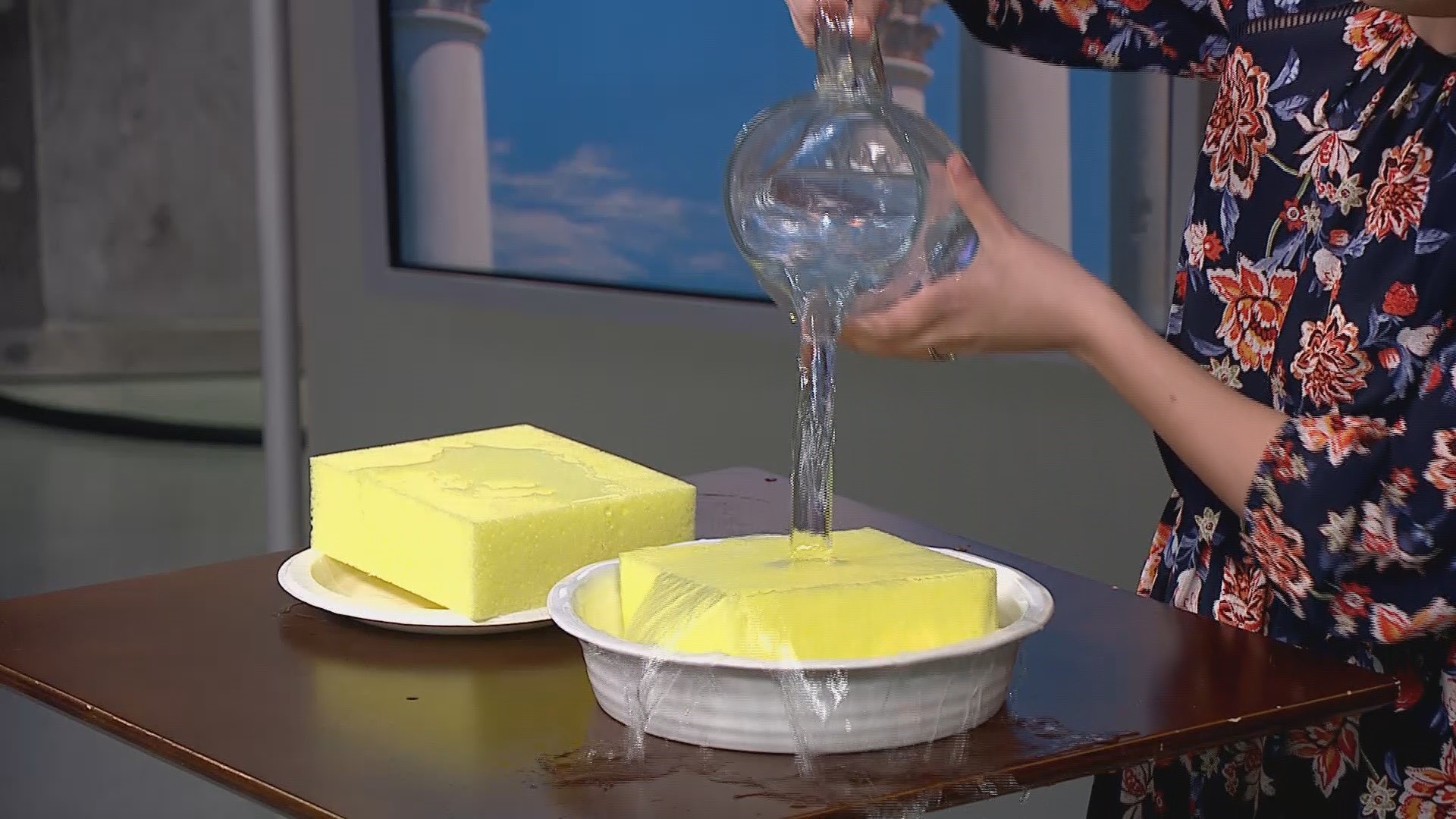WASHINGTON — When you hear a meteorologist talk about the potential for flooding or flash flooding, there are a lot of facets that go into predicting that it could take place.
Taking this down to the most basic of levels, you can understand flooding by doing a science demo with a sponge and water. The sponge is like our ground. When it's dry, it's ready to absorb some water.
When you wash the dishes or the car, you can dump the sponge in water, it will absorb it, but it can only absorb so much. When it's fully saturated, it can't take on any more water unless you squeeze some of the water out.
Our ground outside behaves like a sponge.
When light rain falls, the sponge, aka the ground, can absorb it. Even when the ground is moist or damp, it can still take on more light rain. But when the rain turns heavier, the ground isn't able to absorb it all at once.
This is when you get runoff. The water runs off the ground and follows gravity, flowing to the lowest point on the road, in a ditch, or to a creek or other body of water.
When we have heavy rain events, there is a LOT of runoff. And the water can build up, all rushing downward, following the flow of gravity and streamlines.
This is how a heavy rain event can lead to flooding or flash flooding, depending on the intensity and duration of the rain.
The DC area could pick up 1" to 3" of rainfall later this week, with locally higher amounts possible. The bulk of this rain will fall Thursday night into early Friday morning. There could be some flooding of creeks, streams, and roads with poor drainage during this time frame.
This weekend, river levels will run higher after the rain.
Remember, when driving during heavy rains, be mindful of the roadway. If you come across a flooded road, do not drive through the floodwaters. Water is powerful and just a small amount can sweep you off your feet or float a car.

